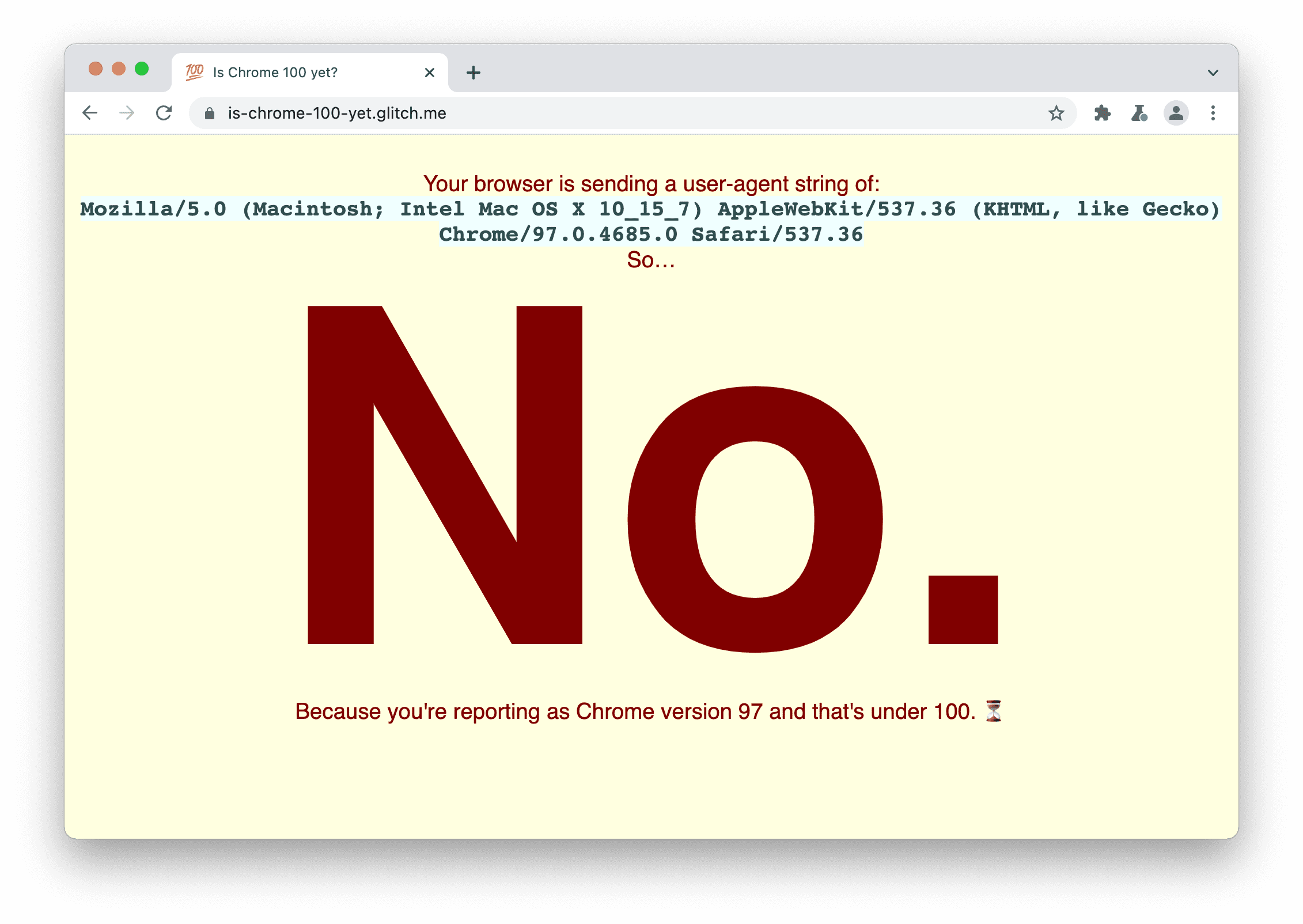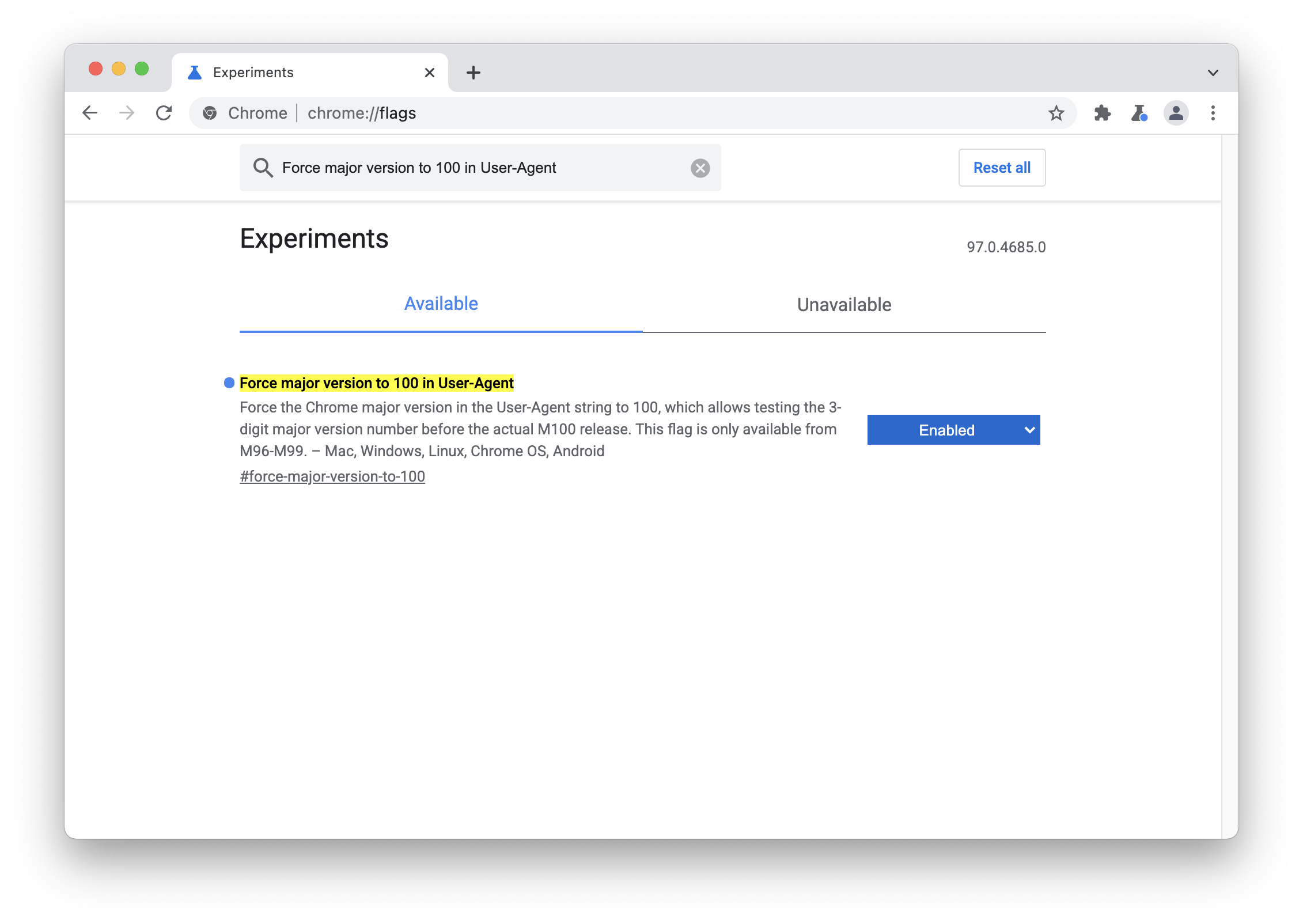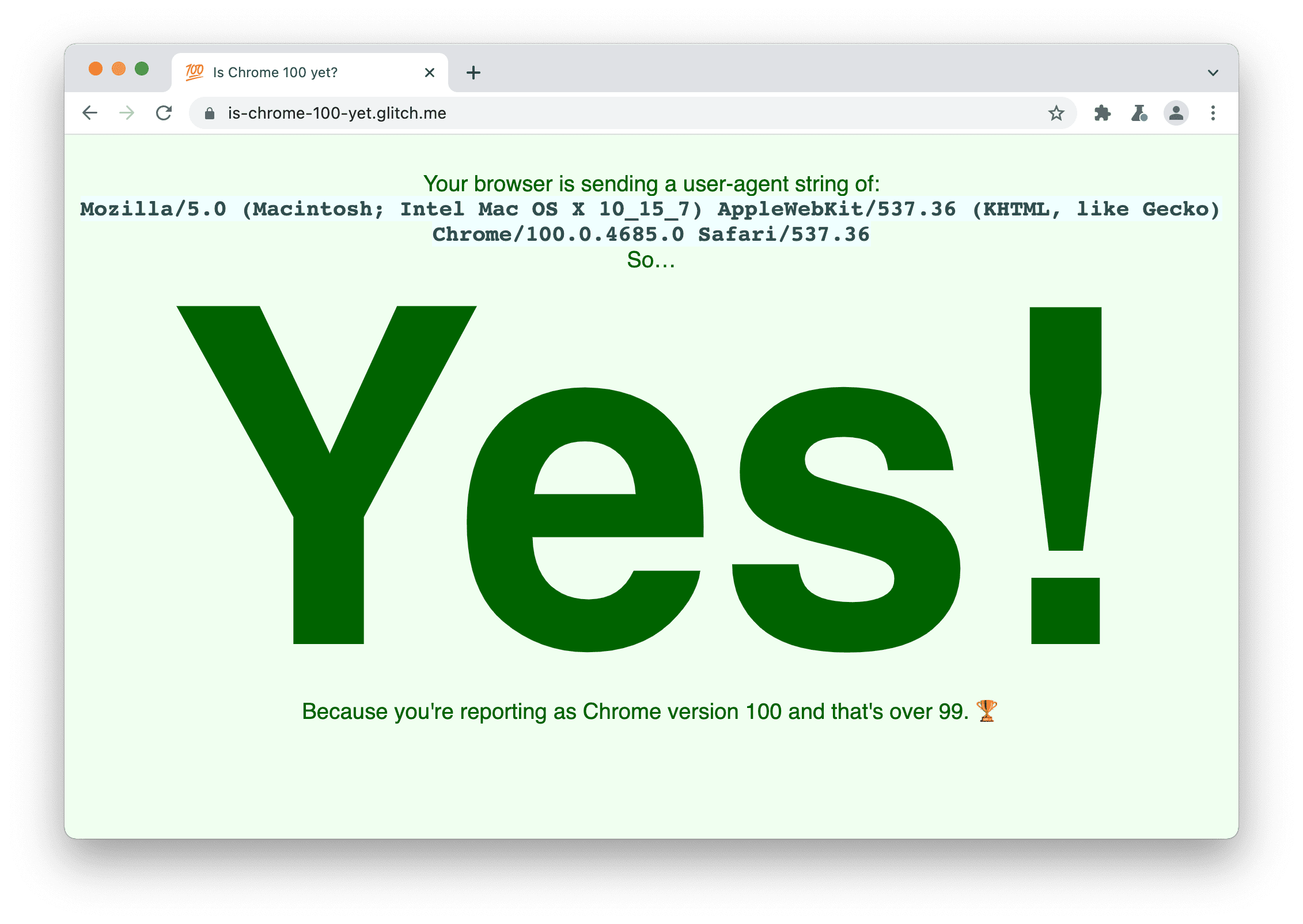A feature flag available from Chrome 96 to 99 enables early testing for possible issues when parsing a three-digit User-Agent string.
In the first half of 2022, Chrome will reach a three-digit major version number: 100! When browsers first reached version 10 many eons ago, lots of issues were discovered with User-Agent parsing libraries as the major version number went from one digit to two. Now that we are approaching version 100 in both Chrome and Firefox, with Edge not far behind, we want to detect possible issues related to three-digit version number early, so we are ready when it becomes a reality.
Starting in Chrome 96, until Chrome 99, a feature flag will be available to force the User-Agent
string to use the major version number 100, regardless of the actual major version
number. It will apply to both the User-Agent request header and the Javascript
APIs (for example, navigator.userAgent).
Similar experiments
are being run on Firefox as well.
Visit Is Chrome 100 yet? to check if your browser is sending the major version 100 in the User-Agent string.

To turn the flag on in Chrome and experiment, type chrome://flags in the address bar and enable
the #force-major-version-to-100 flag.

Visiting Is Chrome 100 yet? after enabling the flag reports that the User-Agent has major version number 100.

The goal is to uncover as many issues as possible ahead of time, so send your bug reports to Web Compat and help prepare the web for three-digit major browser version numbers!


